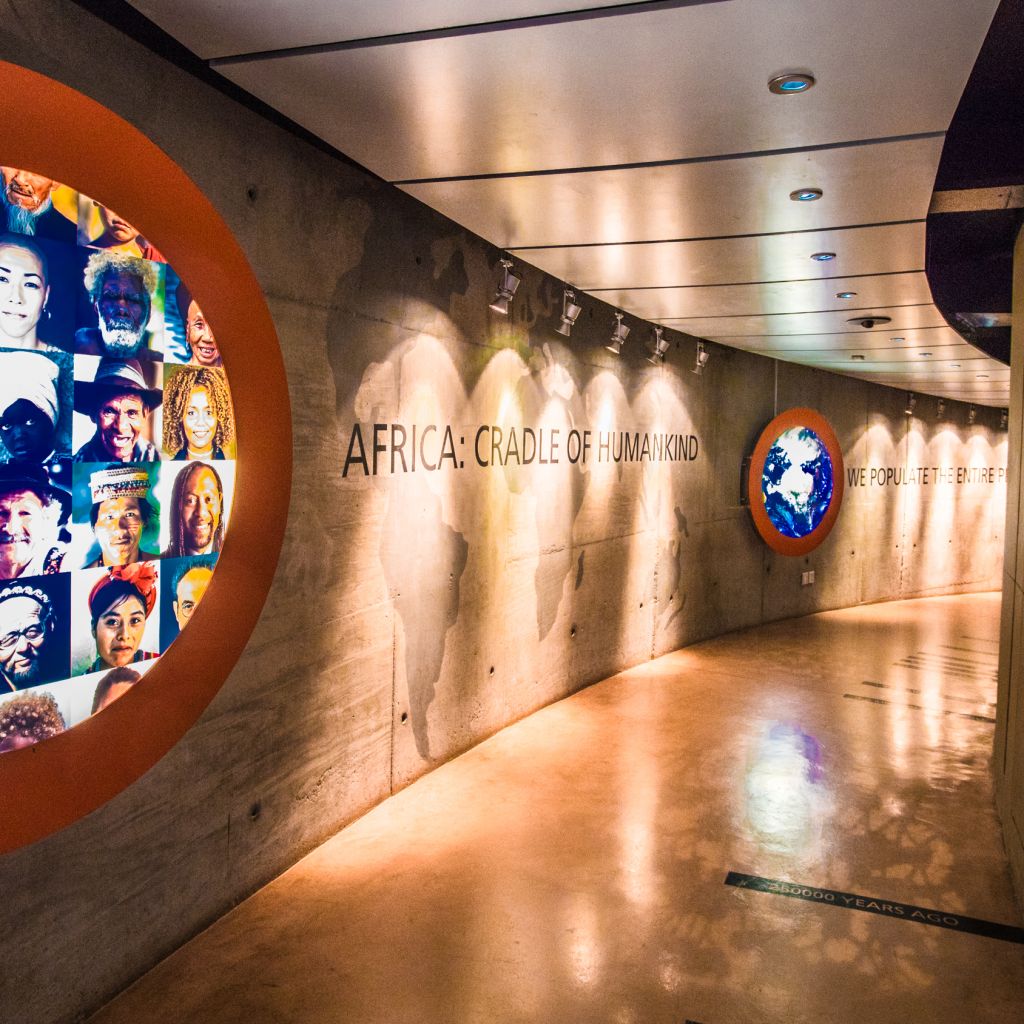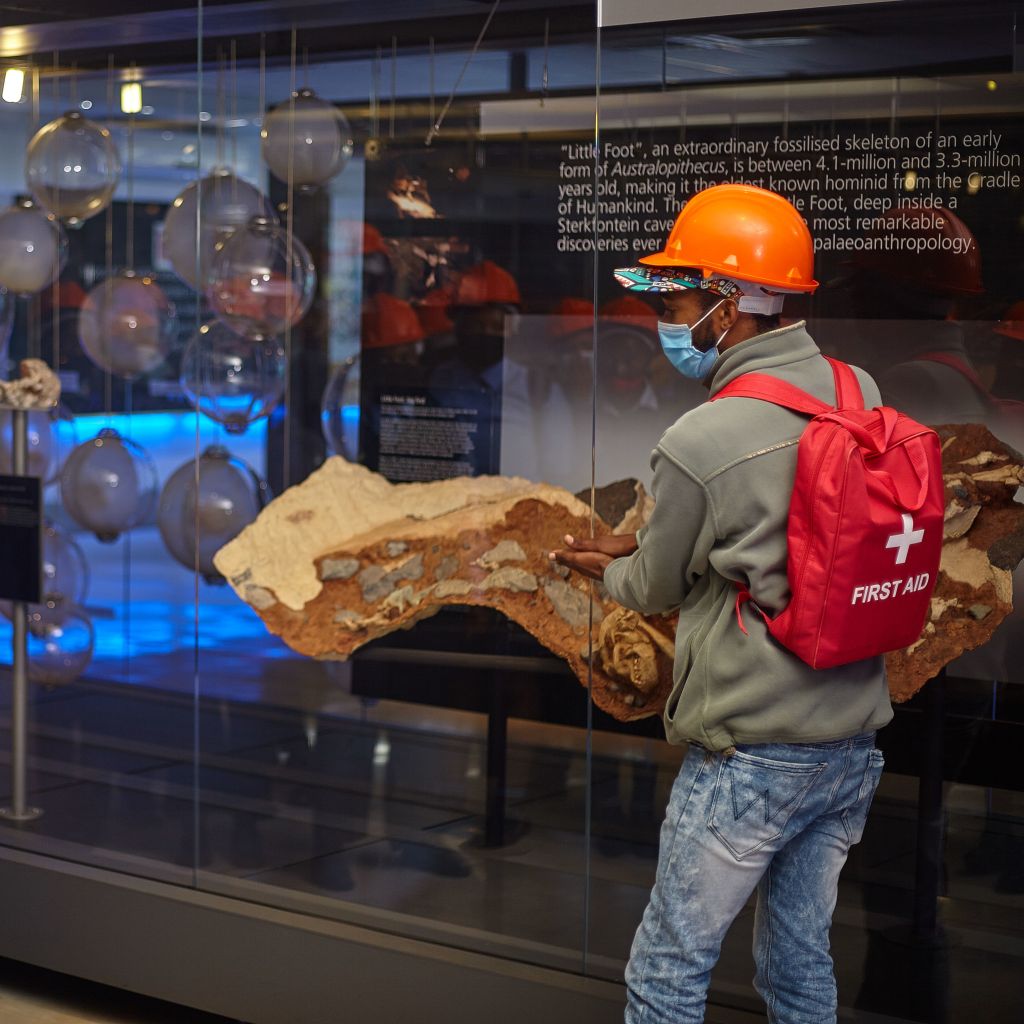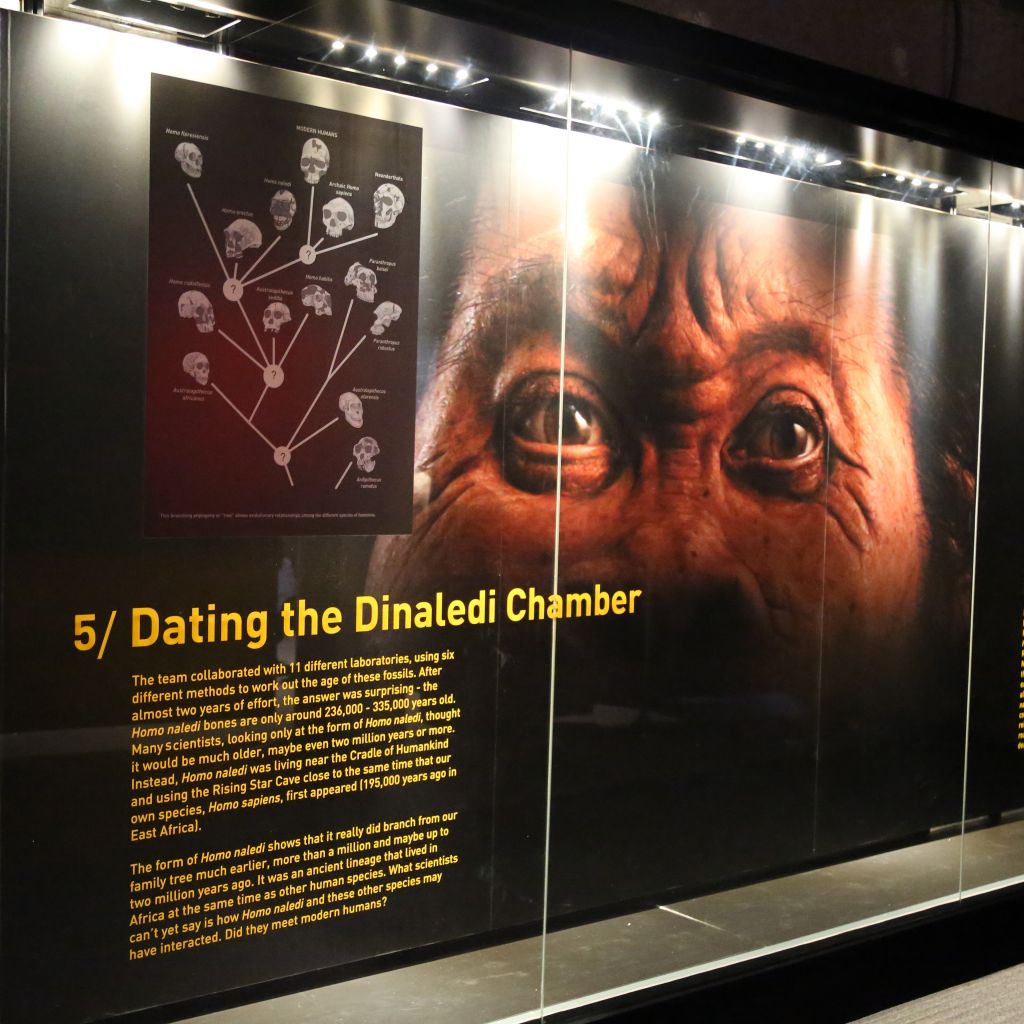Educational resources
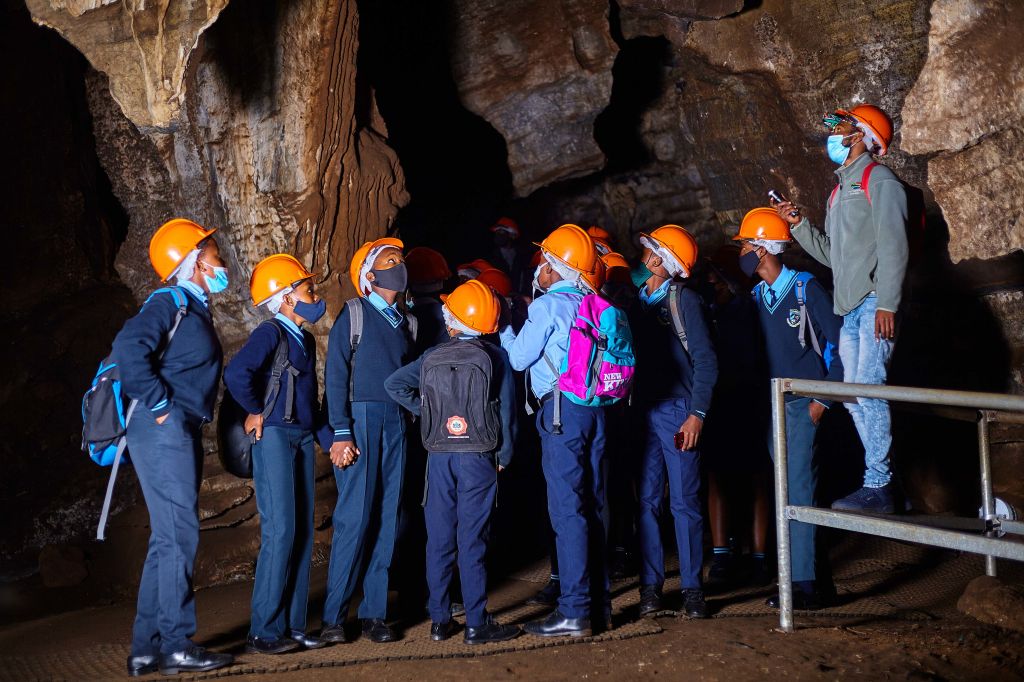
A visit to the Maropeng Visitor Centre and the Sterkfontein Caves is a rich educational experience.
Learners studying at any level, in any area or field, will be able to engage with appropriate content in the interactive exhibitions. A visit to the Sterkfontein Caves gives learners a taste of adventure, along with a practical understanding of the scientific work behind the discoveries that have come out of the Cradle of Humankind World Heritage site.
For more information, please send as an enquiry through our Contact page.
Our sections below cover some of the topics that you may be discussing in the classroom, along with insights on how they apply to what you see at Maropeng.
The following excerpt from our exhibition guide is a good look at how biodiversity has developed since the beginning of the planet.
Scientists regard Africa as a remnant of the Earth’s past diversity. Its relatively sparse human populations until now have allowed people and a great range of other species to co-exist. But this is changing fast. The amazing biodiversity of life on Earth is now under serious threat.
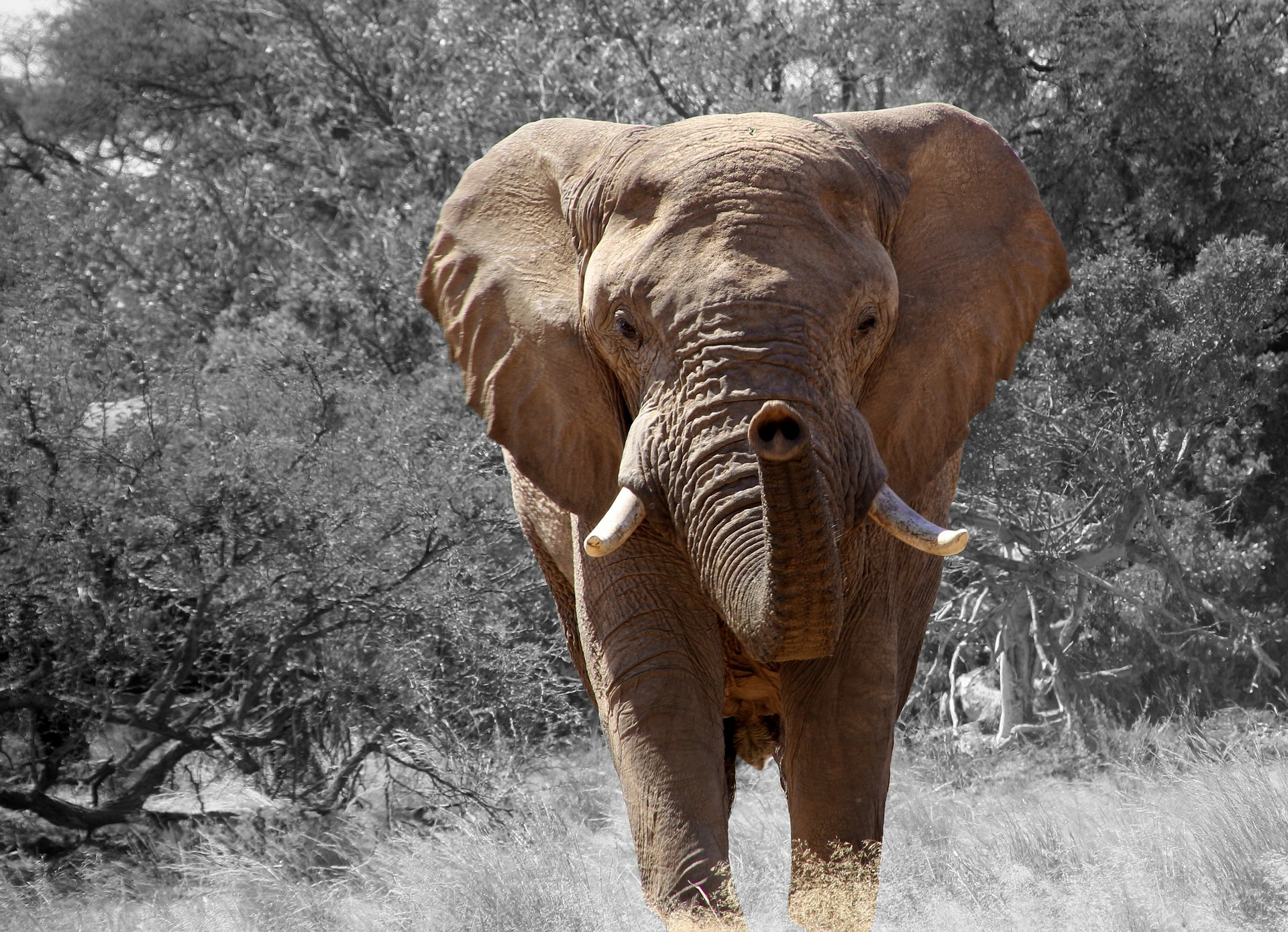
About 600-million years ago, the first sponges, jellyfish and flat worms appeared in the oceans. The first arthropods – millipedes and centipedes, and later spiders and scorpions – moved onto land about 450-million years ago. Insects first evolved about 400-million years ago and reptiles about 330-million years ago. The first mammals appeared about 220-million years ago, and the first birds about 150-million years ago. The first flowering plants began to grow about 118-million years ago. The last dinosaurs were wiped out about 65-million years ago, and the first primates – our ancient ancestors – appeared about 55-million years ago.
However, hundreds – possibly thousands – of species are becoming extinct every year. Some estimates put the number of species dying out at about 100 every day; even conservative records of extinctions run to more than 500 a year.
Currently, classified species include 4 000 different mammals, 9 000 birds and 750 000 types of insects.

The Greek philosopher Aristotle is recognised as being the first person to classify all living things, and some of his groups are still used today, like the vertebrates and invertebrates, which he called “animals with blood and without blood”.
Taxonomy is the science of naming, defining and classifying groups of biological organisms in order to better understand the attributes of different types of plants or animals.
“Taxonomy … not only produces fascinating insights into the characteristics of life on on Earth, above all it provides the answers to many questions. It delivers basic and indispensable knowledge for many fields of human interest and contributes in many ways to the sustainability of our planet.” - BioNET (an international initiative dedicated to promoting the science and use of taxonomy)
In modern science, we have a hierarchy of ranks that are in the following order: domain, kingdom, phylum, class, order, family, genus and species.
How does this work in relation to the hominin fossils discovered in the Cradle of Humankind?
At Maropeng, you’ll hear names such as Australopithecusafricanus, Australopithecus sediba, Australopithecus prometheus (Little Foot) or Homo naledi. These names refer to both the genus and the species of the hominin fossils found in the Cradle of Humankind.
The following section in our exhibition guide explains how humans are linked to the large and complex hominid family:
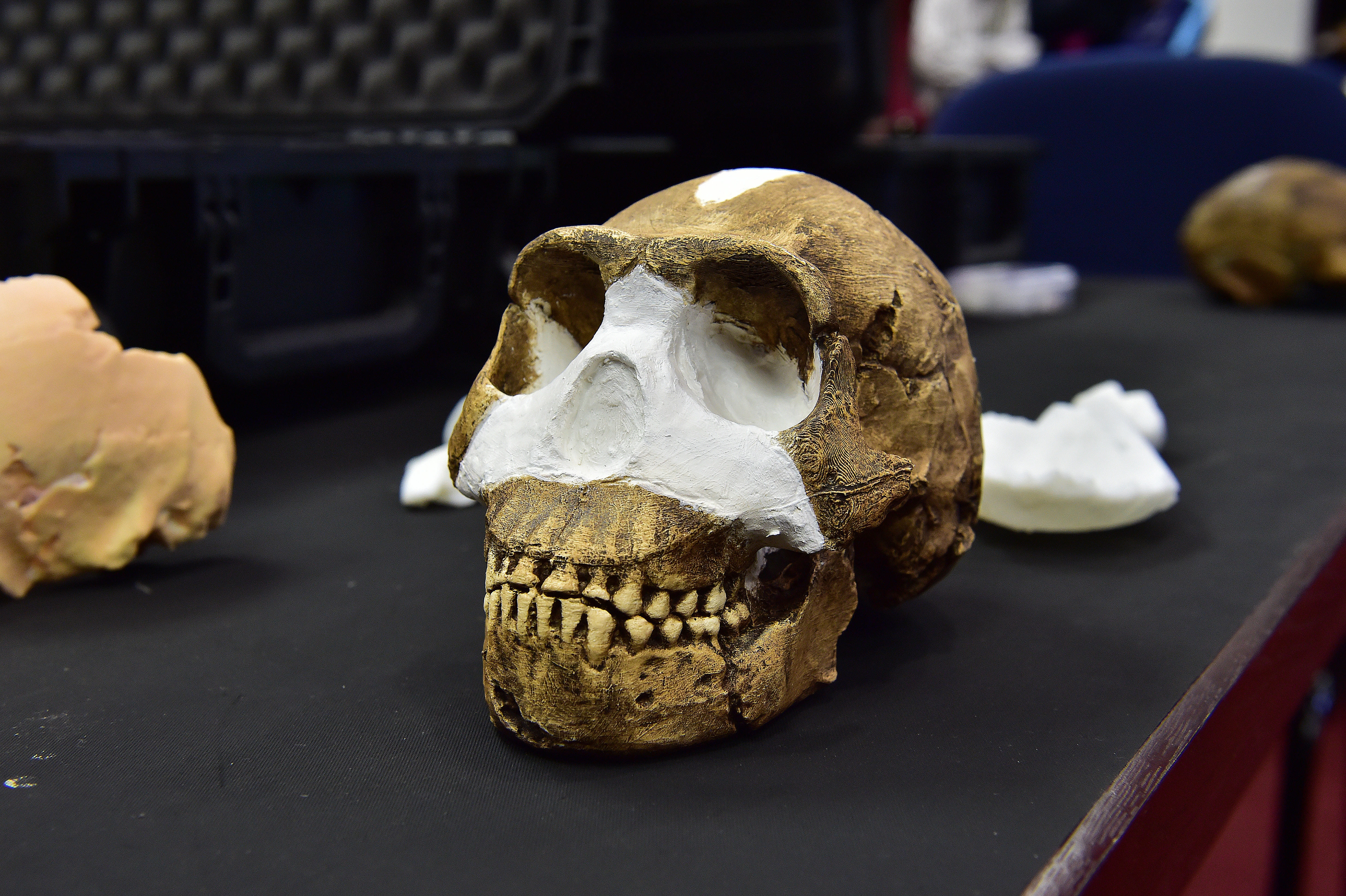
Modern humans are grouped together with all earlier species of the zoological family hominidae as hominids. This is the most recent branch of a family tree that over millions of years has included dozens of hominid species. But we – Homo sapiens (modern humans) – are the only hominids still living today, having been around for only about 200 000 years.
Homo sapiens and all our hominid ancestors belong to the zoological superfamily hominoidea together with the apes (chimpanzees, gorillas, bonobos, orangutans and gibbons). Since we are the only surviving species in the Homo genus, the great apes are our closest living relatives. Humans and apes, together with monkeys, lemurs, lorises and tarsiers, belong to the zoological order Primates.
Although gorillas, chimpanzees and orangutans share many anatomical and genetic characteristics with Homo sapiens, they are not members of the Homo genus. Chimpanzees are classified in the genus Pan, gorillas in the genus Gorilla and orangutans in the genus Pongo.
The genus Homo includes not only Homo sapiens, but also many earlier species of Homo that are now extinct, including Homo naledi, Homo habilis, Homo ergaster (in Africa), Homo erectus (in Europe and Asia), Homo antecessor, Homo heidelbergensis and Homo neanderthalensis (in Europe).

Can you answer the following questions?
- What is the next smallest classification after “order”?
- What is the smallest classification group?
- Name the two classification groups that all living organisms share.
- Which part of the scientific name is capitalised?
- What is binomial nomenclature?
Answers:
- Family
- Species
- Genus and species
- The first letter of the genus
- A name made up of two names
Educational puzzles for children
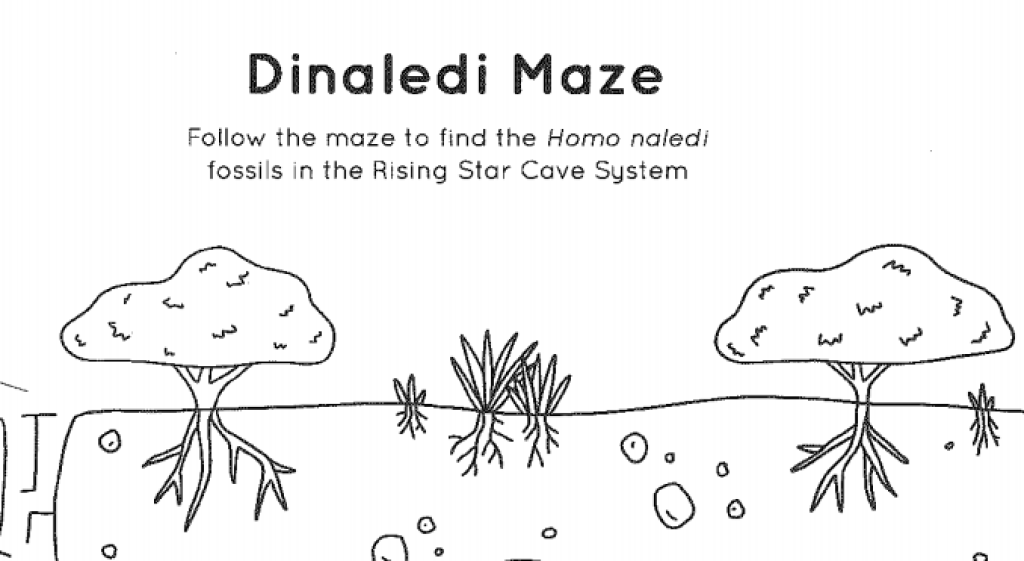
Looking for a fun way to get younger children to engage with the scientific treasures discovered in the Cradle of Humankind World Heritage site? What about a maze that goes through the Dinaledi chamber? Or a join-the-dots puzzle that traces some of the most important fossils found on the African continent?
These brilliant worksheets were created by Professor Tracy Kivell at the University of Kent, and are provided here with her kind permission.
Download them below.
